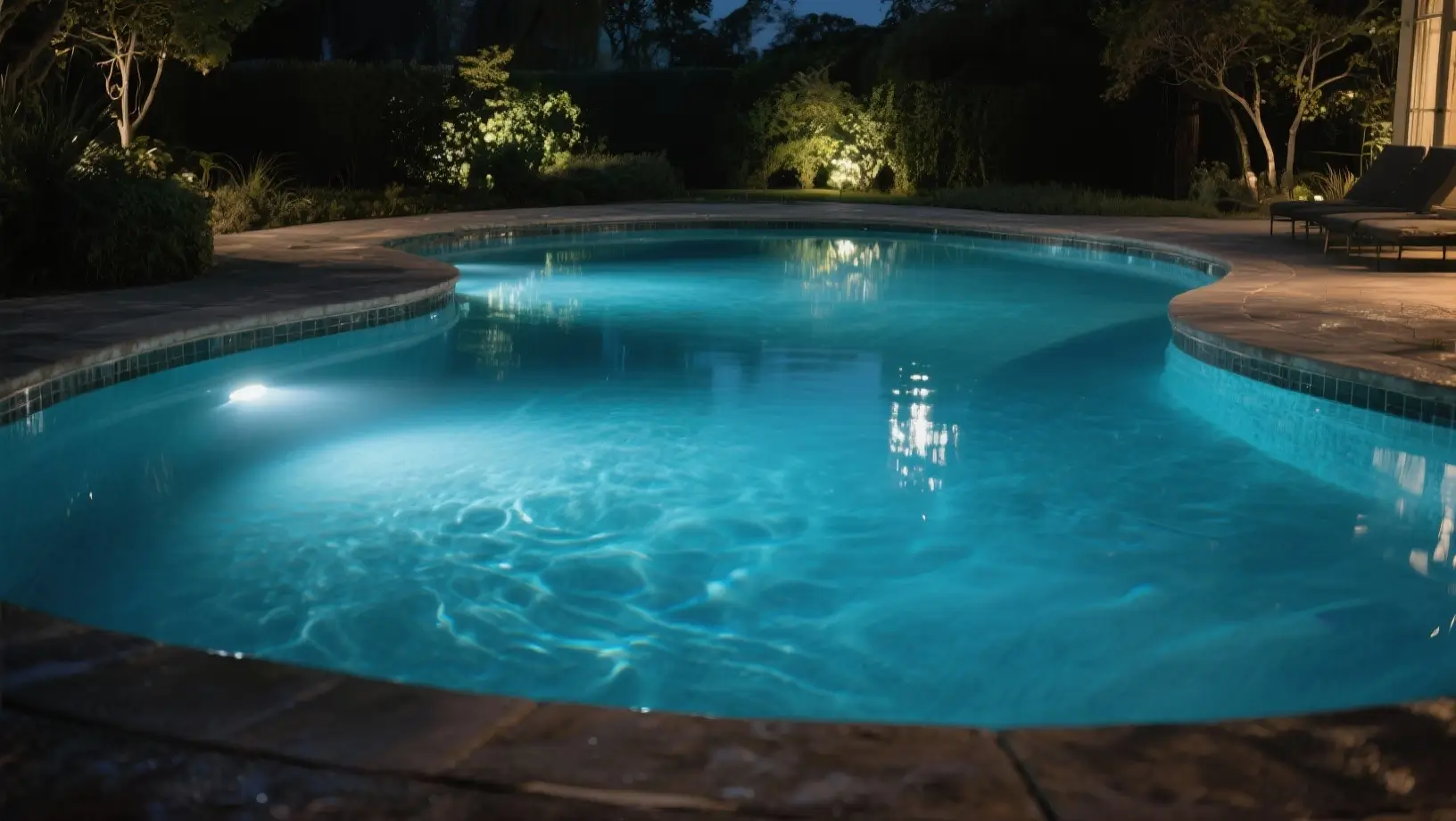What is Parts per Million (PPM)? Understanding PPM Meaning for Safe Pool Chemicals Management

Maintaining a clear, safe swimming pool hinges on precisely managing the pool chemicals in the water. As you review the testing kit results and technical jargon, you might ask: What is parts per million (PPM), and why is it so important for my pool?
PPM is the universal standard for water quality analysis. It directly tells you if the concentration of substances in your water is safe, effective, and balanced according to industry standards. This comprehensive guide will deep-dive into the meaning of PPM, outline the specific official ranges mandated by Australian authorities, and teach you how to use PPM to accurately calculate and adjust your water quality, allowing you to master scientific pool maintenance.
Understanding the Parts Per Million (PPM) Unit of Measurement (The "What" and the "Why")
In pool maintenance, PPM is the most critical unit of measure. It represents the concentration of a specific substance dissolved in the water. Put simply, what parts per million means is "one part out of a million."
The Core Definition of PPM:
PPM is a ratio that quantifies how many units of a target substance are contained within every 1 million units of water. To visualise this, imagine placing a single grape into a massive orchard containing 1 million grapes—the concentration of that single grape would be 1 PPM.
Why PPM Is Crucial for Australian Pool Owners:
- Precision and Safety: Pool water quality is a delicate balance. If levels of pool chemicals like chlorine or acid are too high, they can cause skin and eye irritation or damage equipment. If too low, disinfection fails. Using PPM enables precise dosing.
- Universality and Compliance: PPM is the unit used globally and by Australian state health departments to set water quality standards. Understanding the PPM meaning allows you to easily cross-reference your test results with official Australian guidelines to ensure your water is compliant and safe.
Official PPM Standards and Recommended Ranges for Pool Health
Merely understanding the PPM meaning is not enough; responsible pool ownership in Australia requires adhering to local and national standards. For Australian pool owners, the standards outlined in AS 3633-1989 (Australian Standard for Swimming Pool Water Quality) and various state health guidelines are the primary references for chemical balance.

Here are the critical PPM ranges (where mg/L is equivalent to PPM) as recommended by Australian authorities:
1. Free Chlorine Concentration (Sanitiser)
- Recommended Range: 1 – 3 PPM. This range is sufficient to destroy harmful microbes while ensuring minimal irritation to swimmers.
- Public Facility Note: For public pools, state health regulations (such as those in NSW) often require free chlorine levels to be maintained at a minimum of 3.0 PPM.
2. pH Level (Acid-Alkaline Balance)
- Recommended Range: Australian standards recommend maintaining a pH of 7.2–7.6, with an operational range of 7.0–7.8.
- Safety: Maintaining this range is essential because it optimises chlorine's effectiveness and prevents eye/skin irritation. High pH (above 7.8) drastically reduces the sanitising power of your pool chemicals.
3. Total Alkalinity (TA - pH Buffer)
- PPM Range: TA should typically be maintained between 60 – 200 PPM.
- Function: Total Alkalinity acts as the water's "buffer," preventing dramatic pH swings. Low TA (below 60 PPM) can cause rapid pH fluctuations, which can be corrosive to pool surfaces and equipment.
4. Cyanuric Acid (CYA - Chlorine Stabiliser)
- PPM Range: For outdoor pools using stabilised chlorine, the ideal CYA level is 30 – 50 PPM. Some operational guidelines suggest a maximum of 50 PPM.
- Warning: Excessive CYA (over 80-100 PPM) can over-stabilise the chlorine, locking it up and making it ineffective at disinfecting the water, even if your test shows a high chlorine PPM reading.
Converting Your Pool Test Results into Accurate PPM Readings
Once you know the parts per million you need, the next step is to translate your physical test kit results into usable PPM data. Understanding your tools is crucial for accurate pool maintenance.

1. Test Strips: Quick and Direct PPM Readout
Test strips are the fastest and most convenient method. They use colour changes to indicate concentration.
- Reading Method: Dip the strip for the specified time, then immediately compare the colours to the chart on the container.
- PPM Conversion: Most quality test strip brands directly display the PPM value (e.g., 3.0 PPM) for chlorine, pH, and alkalinity, eliminating the need for manual calculation.
Always check the expiry date and perform the reading in bright, natural light for the most accurate interpretation of the colour-coded PPM meaning.
2. Liquid Reagent Kits: Precision Through Titration
For the highest precision, liquid titration kits (especially for Total Alkalinity and Calcium Hardness) are preferred by many professionals.
- Reading Method (Colour): For chlorine and pH, the colour of the water sample is matched against a reference colour block, each labelled with the corresponding PPM or pH value (e.g., pH 7.4).
- Titration Counting: For Total Alkalinity, the result is determined by counting the number of reagent drops needed to change the sample's colour. The kit provides a multiplier (e.g., one drop = 10 PPM) to convert the drop count directly into a precise PPM value.
For the ultimate convenience and continuous accuracy, many Australian pool owners are now using a digital pool water monitor to provide real-time PPM, pH, and ORP data without the need for reagents or frequent manual testing.
Mastering Dosage: Calculating Chemical Needs Using PPM
Accurate PPM meaning ultimately guides how much chemical to add to your water safely. Once you have the current PPM reading, you use the difference between your current reading and the Australian ideal range to calculate the necessary dosage.
1. The Core Calculation: Determining PPM Change Needed
First, calculate the gap between your current level and your target level:
Required Change = (Target Ideal PPM - Current PPM)
2. Converting PPM Demand to Actual Product Dose
Since different products (e.g., liquid acid vs. dry acid, granular chlorine vs. liquid chlorine) have different potencies, you must use a factor specific to the product and your pool size (measured in litres or kL).
Required Product Dose (kg or L) = Pool Volume (L) x Required PPM Change / Product Factor
When adjusting a chemical like Calcium Hardness or CYA, it often requires large amounts of product. Always follow the manufacturer's directions precisely for your specific product's "factor." Once the chemical balance is perfect, consider using a robotic pool cleaner to maintain water circulation and floor cleanliness, preventing future PPM issues caused by debris.
3. Safe Dosing Protocol (Must Follow)
To avoid drastic over-correction, follow this safe practice recommended by pool professionals:
- Dose in Batches: Never add the entire calculated amount at once. Only add 1/2 or 2/3 of the estimated dose initially.
- Circulate and Wait: Turn on the pool pump to allow the water to circulate for 4 to 8 hours, thoroughly mixing the pool chemicals. A well-circulated pool is crucial for even PPM distribution, which is why a high-quality pool cleaner that also circulates water can help maintain this balance.
- Retest: Before adding the remaining dose, you must retest the water's PPM. Only proceed if the PPM reading is still below your target. This prevents overdosing and maintains a stable chemical balance.
Common PPM Mistakes and Misconceptions (FAQ)
Even experienced Australian pool owners encounter issues when managing their pool chemicals and PPM levels. Here are answers to common misconceptions and warnings from official guidelines.
Q1: My PPM readings are unstable. Is my test kit broken?
A: Not necessarily. Extreme PPM fluctuations often indicate that the water's buffering capacity is insufficient. Low Total Alkalinity PPM causes pH to fluctuate, which in turn affects the stability and effectiveness of your free chlorine PPM. Always correct Total Alkalinity first.
Q2: Can I keep my Free Chlorine PPM above 5.0 PPM for extra sanitation?
A: No, this is highly discouraged. While high chlorine kills microbes faster, Australian guidelines recommend free chlorine should not consistently exceed 3.0 PPM, as persistent high PPM can cause skin irritation and accelerate the corrosion of pool equipment. If your chlorine PPM is too high, cease adding chlorine and allow the sun to naturally dissipate the excess, or perform a partial drain and refill (dilution) to bring the PPM back into the 1.0 - 3.0 PPM safe range.
Q3: Why is my chlorine not working, even though my test kit shows a high PPM?
A: This is a classic case of CYA lock. If the Cyanuric Acid (CYA) PPM meaning exceeds the recommended range, the chlorine is technically present but is "locked up" by the excessive CYA and cannot effectively disinfect. CYA cannot be chemically removed, so the only reliable solution is to drain and replace a portion of the pool water (dilution) until the CYA PPM reading returns to the recommended 30 - 50 PPM range.
Conclusion: Maintain Your Pool Health with PPM Mastery
Mastering what parts per million is the key to transforming your pool maintenance from guesswork to guaranteed water safety and clarity. By carefully following the Australian water quality standards, you ensure a safe and comfortable swimming environment while protecting your investment.
Best Practices and Final Action Steps:
- Prioritise Balance: Always confirm your Total Alkalinity (TA) is within the 60–200 PPM ideal range before making significant adjustments to pH or chlorine.
- Be Precise: Use the PPM ranges (e.g., 1.0 - 3.0 PPM for chlorine) to calculate your dosage, and strictly follow the dose-in-batches, circulate, and retest protocol.
- Stay Compliant: Always reference AS 3633-1989 and local health guidelines.
A safe pool is a balanced pool. By precisely managing the PPM meaning of every reading, you ensure your pool stays sparkling clear, healthy, and inviting throughout the Australian season! And don't forget the easiest step in maintenance: let an Aiper robotic pool cleaner handle the daily skimming and scrubbing so that you can focus on the perfect chemical balance.

